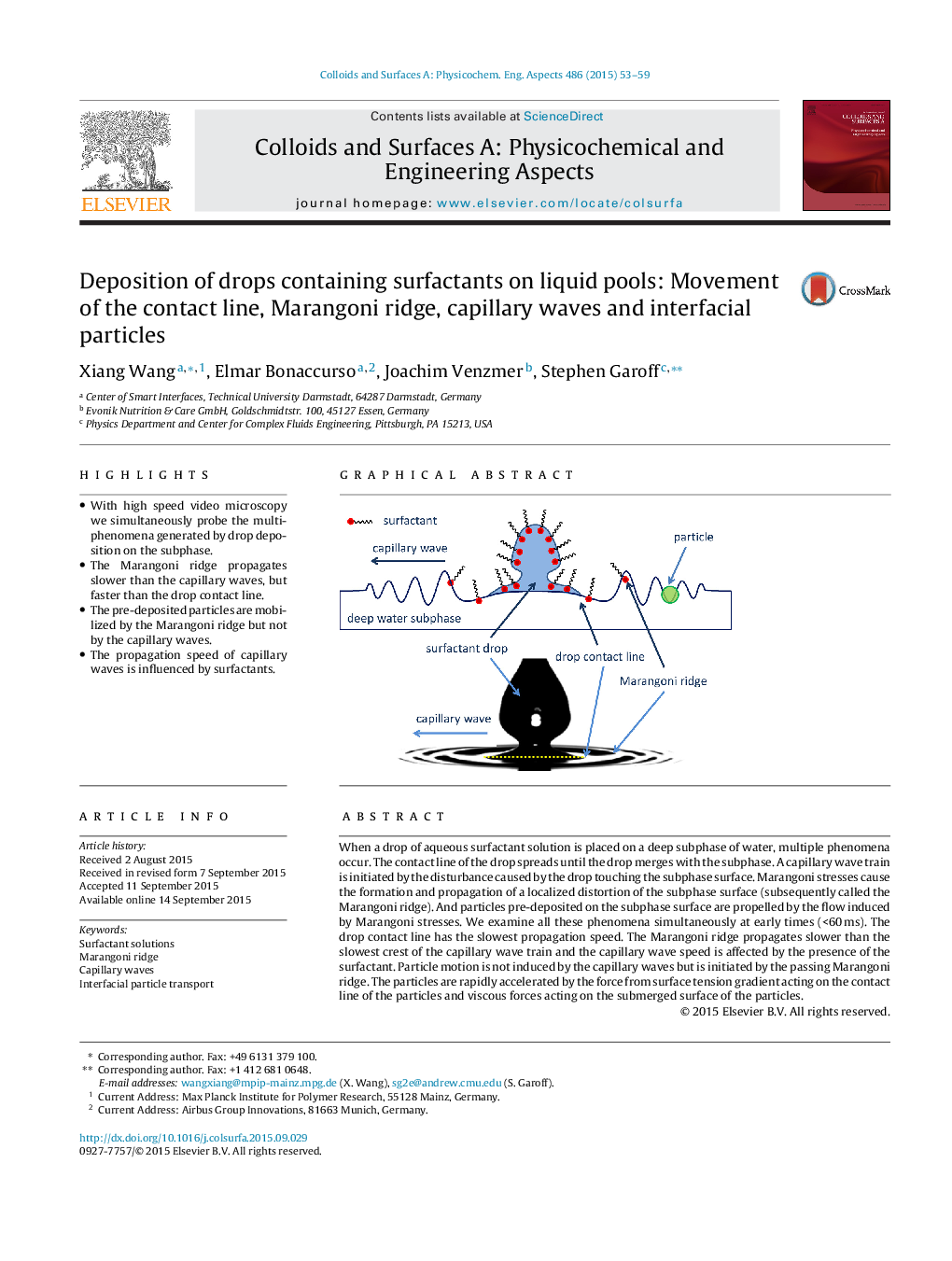| Article ID | Journal | Published Year | Pages | File Type |
|---|---|---|---|---|
| 591923 | Colloids and Surfaces A: Physicochemical and Engineering Aspects | 2015 | 7 Pages |
•With high speed video microscopy we simultaneously probe the multi-phenomena generated by drop deposition on the subphase.•The Marangoni ridge propagates slower than the capillary waves, but faster than the drop contact line.•The pre-deposited particles are mobilized by the Marangoni ridge but not by the capillary waves.•The propagation speed of capillary waves is influenced by surfactants.
When a drop of aqueous surfactant solution is placed on a deep subphase of water, multiple phenomena occur. The contact line of the drop spreads until the drop merges with the subphase. A capillary wave train is initiated by the disturbance caused by the drop touching the subphase surface. Marangoni stresses cause the formation and propagation of a localized distortion of the subphase surface (subsequently called the Marangoni ridge). And particles pre-deposited on the subphase surface are propelled by the flow induced by Marangoni stresses. We examine all these phenomena simultaneously at early times (<60 ms). The drop contact line has the slowest propagation speed. The Marangoni ridge propagates slower than the slowest crest of the capillary wave train and the capillary wave speed is affected by the presence of the surfactant. Particle motion is not induced by the capillary waves but is initiated by the passing Marangoni ridge. The particles are rapidly accelerated by the force from surface tension gradient acting on the contact line of the particles and viscous forces acting on the submerged surface of the particles.
Graphical abstractFigure optionsDownload full-size imageDownload as PowerPoint slide
